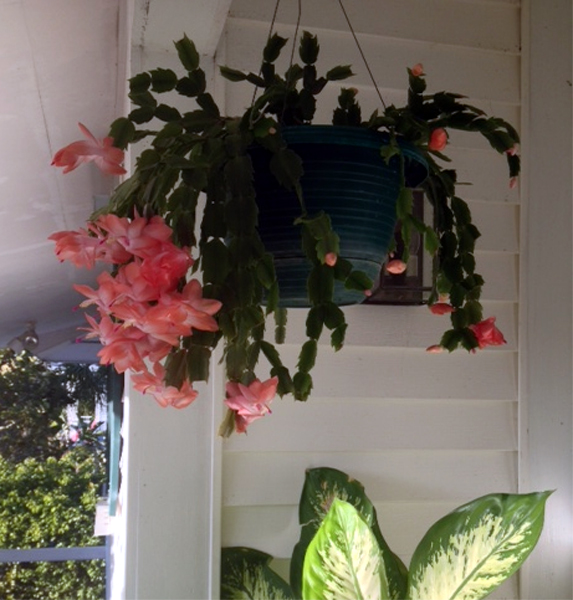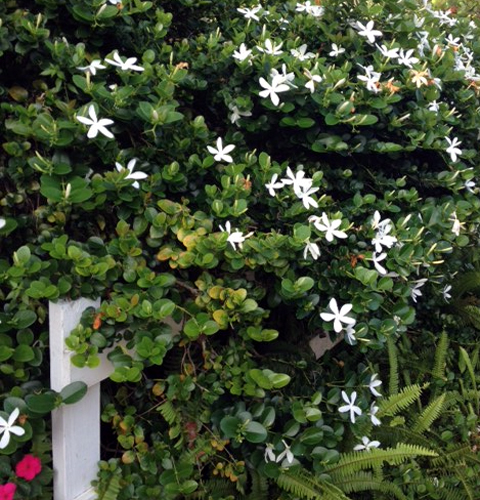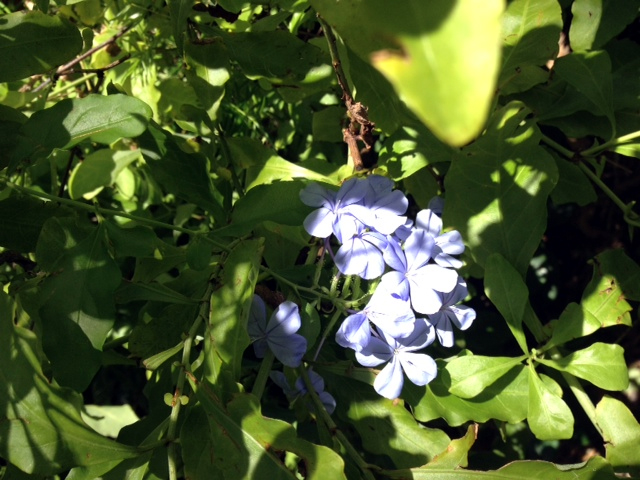Good Morning Friends,
It's a bright sunshiny day, the skies are deep blue, and the late afternoon rains have begun. It's a beautiful day in Paradise with lush tropical foliage and flowers abloom everywhere you look. We hope that those of you who are away are having a great summer and enjoying your northern gardens.
I am going to clip some of the huge clusters of Ixora bloomsand variegated Arboricola stems for an arrangement this morning. The beautiful fresh bouquet is now adorning the table. It will last for several days. Ixoras are my favorites.
Ixora blooms in passion pink
While perusing the garden, I noticed the White African Iris plants in large containers needed dividing. I decided to re-pot one of the containers of plants. My little saw comes in handy for this project. I filled six pots with a small piece of paper towel over the drain holes. This holds the potting soil in the container. A small piece of screen also works. I added Organic potting soil halfway up the pots and then divided the sections of the plant. It is easy to tell where they should be divided as they zigzag slightly between one another. After sawing through each plant and its small rootball, I proceeded to set each section in a pot. Then I filled the pots to within one inch of the rim with the potting soil, watered them well and placed in my plant staging area in partial sun. They grow, but do not flower as freely in the shade. Partial sun works well. These stems are approximately two feet tall. They must grow new plants overnite. Oddly, I have never seen a new one shorter than the originals.
African Iris are easily divided
I've divided Staghorn Ferns and Anthuriums and varieties of hanging plants as well for our October plant sale. I also potted some plants for our eldest son who is an avid gardener. This is a great time to start new plantings.
New plantings should be checked for moisture every day if they are in containers. They may need to be watered twice a day if newly planted in the ground. Water in the morning or evening. When the sun is shining on them, watering could cause leaf burn. When the humidity is low on a hot, breezy day, it may be necessary to water other container pots as well.
Multi-colored Caladiums
Our Caladiums are doing so well. We will purchase more bulbs for our Spring Club sale. The State of Florida is regarded the Caladium capital of the world. The Candidum, Jr. variety has been in one of the plant boxes for about six years. In the past, we had Impatiens mixed in with them. Since regular Impatiens haven't been available in recent years, we've used other annuals mixed with them over the winter. This year, pink Geraniums have made a pleasing combo. We have some Caladiums planted in the ground and others in a variety of mixed colors in round bowl type clay pots. Caladiums are so much fun to grow. They appear year after year. It is always a surprise to see which colors appear as we have several colors mixed in the same areas.
Caladiums are gorgeous in Florida gardens
Seagrapes are laden with clusters of grapes. I don't recall ever seeing so many. The island is absolutely loaded with them. They are a jelly maker's dream and have a taste of their own.
Many of the fruit trees are producing extraordinarily huge crops this year. The Mango trees are covered in ripe to nearly ripe healthy crops of fruit. We had quite a windy day a few weeks ago. A neighbor's tree sent lots of fruit to the street. It reminded me of picking up black walnuts from the country roads in Michigan many years ago.
Plumeria - A favorite on Sanibel Island too!





























































